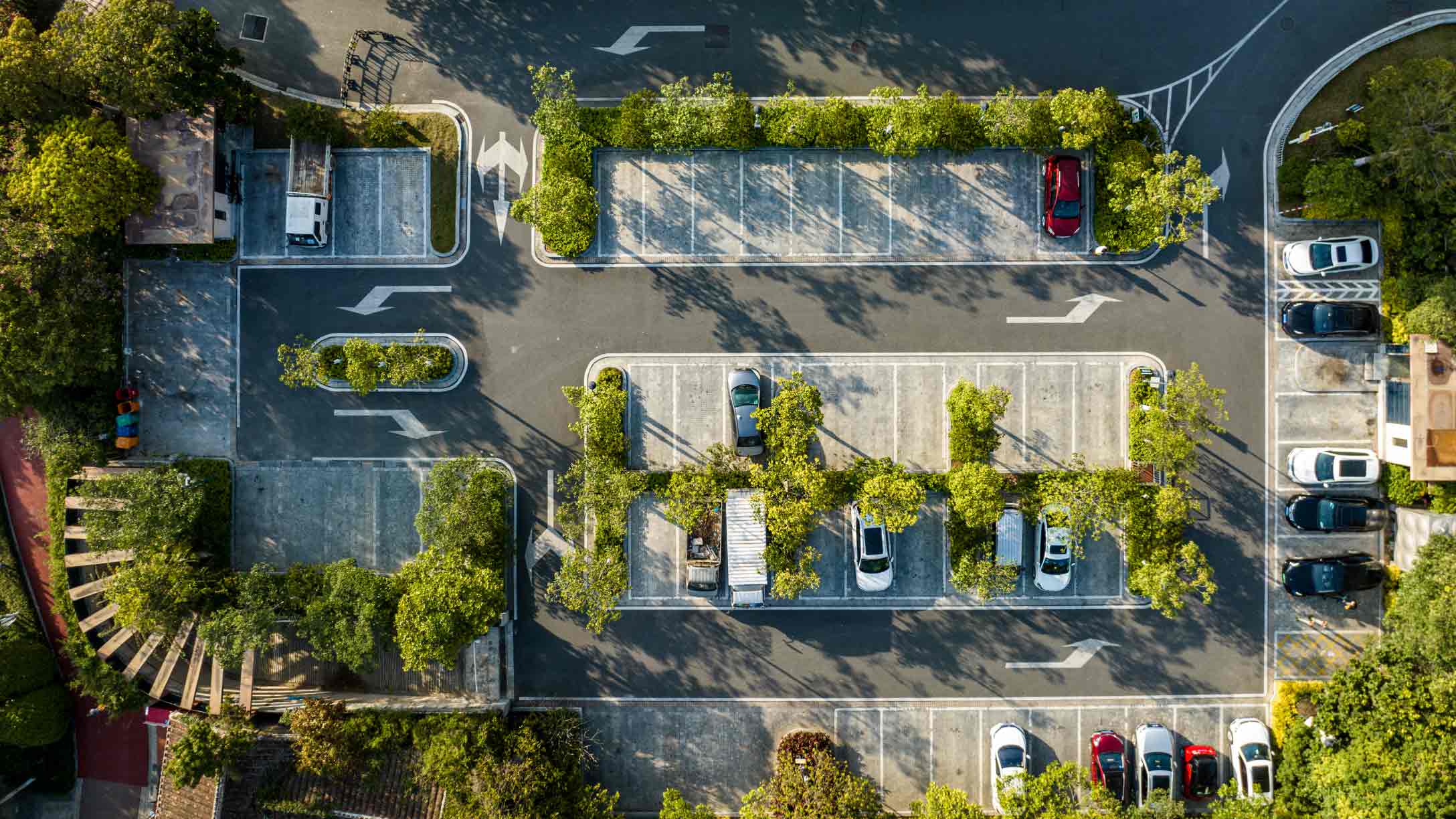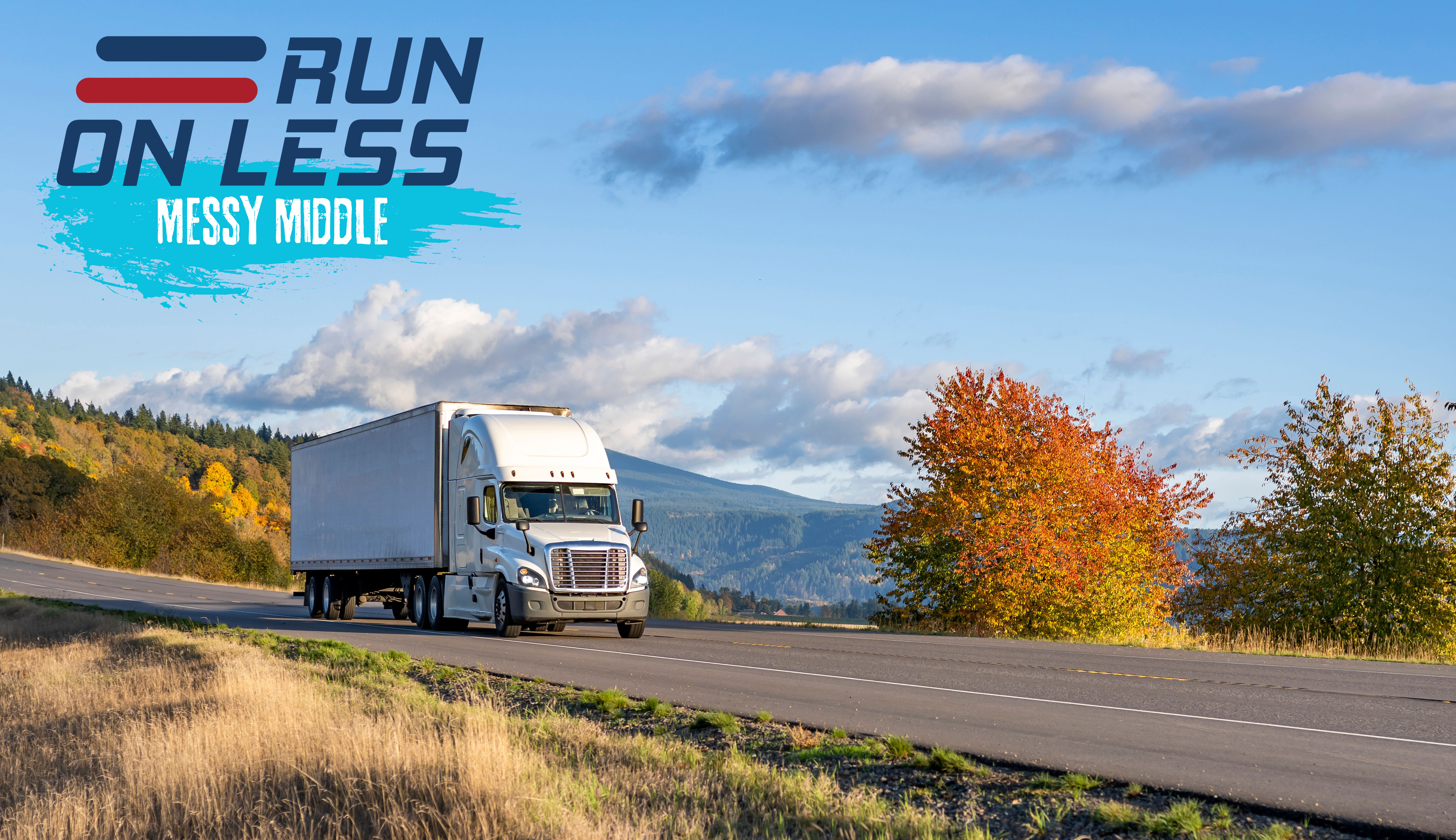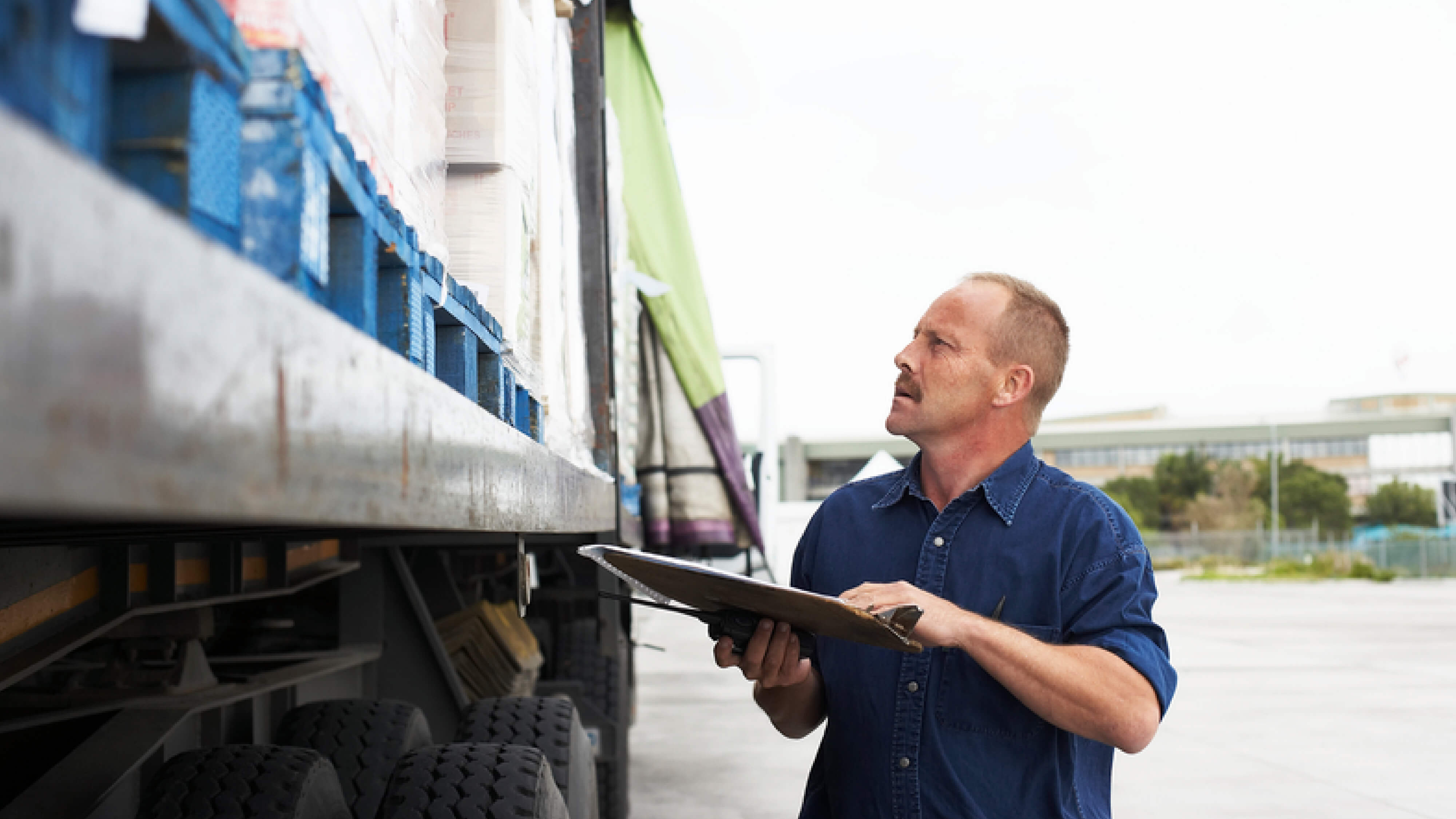Navigating the road to greener fleets: Insights from industry leaders
Discover how industry leaders are using telematics for greener fleets. Sustainability is not just about EVs; it's also about smart, data-driven choices.

Content Marketing Manager • Corporate Marketing
Jul 28, 2025

The world is moving towards a more sustainable future and the transportation sector has a critical role to play in reducing carbon emissions. Telematics and connected vehicle data are essential tools in this journey, enabling fleets to make data-driven decisions that contribute to a greener tomorrow.
At Geotab Connect 2023, a panel of commercial and public sector experts gathered to discuss how they are integrating sustainability into their fleet management strategies.
The panel included:
Tracey Swanson – Manager, Fleet Services, FortisBC
Amanda DeVoe – Sustainability and Technology Director, Fleet, PepsiCo
Ed Guelfi – Assistant Director of State Fleet Operations, Connecticut Department of Administrative Services
Laura Bryson, as moderator – Product Manager, Sustainability, Geotab
In this blog post, we’ll recap some of the highlights of the panel discussion and share insights and best practices from these real-world fleets on how they are accelerating sustainability. Some key takeaways include:
- Telematics and connected vehicle data are essential tools for fleets to make data-driven decisions that contribute to a greener future.
- Fleet sustainability is not just about electrifying the fleet. It involves reducing idling time, optimizing routing and using telematics and connected vehicle data to monitor fleet performance and minimize miles and idle time.
- Sustainable fleets are those that make small changes that have a greater than anticipated impact towards sustainability goals, such as geofencing muster areas and limiting idling time, communicating with drivers to reduce fuel usage and emissions, and identifying better routing options.
- Organizations can use telematics to advance fleet sustainability. They can gain unprecedented insight into their fleet's behavior and impact, enabling them to set specific, measurable, achievable, relevant and time-bound goals for reducing emissions and improving fuel efficiency.
- For fleets that recognize the value of sustainability but are struggling to prioritize it amongst other operational responsibilities, it’s crucial to take advantage of the present, focus on behaviors that can improve the fleet's financial performance and environmental impact, and look for other opportunities to reduce emissions.
- The future of sustainable fleets is multifaceted. It involves getting more people to rideshare and use pool vehicles, having a diverse range of sustainable options within a fleet, exploring new technologies, maintaining gas and diesel assets and continuing to evolve towards EVs.
- Ultimately, sustainability is a journey, and it’s important to leverage data and insights to address vehicle conditions and employee behavior, focus on accessible behaviors and vehicle conditions, and make well-informed decisions that drive the most impact on profit and loss while also reducing emissions.
How macro-economics affect fleet sustainability
Q: What are the macro-economic factors that impact your fleet's ability to operate and operate sustainably?
A: Amanda – PepsiCo
Amanda says conditions for fleet operations are tough and complex, with many variables such as fuel, supply chain and access. Sustainability is not just about electrifying the fleet, but also about monitoring fleet performance and minimizing miles, idle time and improving miles per gallon. The focus should be on improving accessible behaviors and vehicle conditions to serve sustainability requirements and P&L. Economic factors will continue to evolve, so it is essential to leverage data and insights to address vehicle condition and employee behavior. Amanda emphasized that sustainability is a journey, and the priority should be to go after what can be improved now.
Key strategies for fleet sustainability and why they matter
Q: Which are the most vital strategies your organization is investing in and why have you chosen these to focus on?
A: Ed Guelfi – Connecticut Department of Administrative Services
The key challenge for the State of Connecticut has been knowing the true usage of their fleet. The agency needed a reliable and accurate way to track vehicle usage to better understand how they could make their fleet more efficient. The seemingly inevitable transition to electric vehicles was the focus, but with the help of Geotab tools, they began exploring other paths to sustainability. The agency discovered their vehicles were idling excessively, which led them to implement idle reduction strategies. They also plan to acquire vehicles prior to making the transition to electric, due to the expected infrastructure challenges. Even with the goal of transitioning to EVs, the organization recognizes the need to find other ways to achieve sustainability while waiting and working toward this ultimate goal. With the right tools and strategies in place, they are determined to make a positive impact on the environment and their community.
A: Tracey – FortisBC
Tracey explained how Geotab tools have been instrumental in achieving significant reductions in idling. By geofencing their muster areas and limiting idling time to 15 minutes, they were able to reduce idling by 35% in the first year alone. This has resulted in substantial savings in maintenance and fuel costs, as well as reduced emissions. Tracey also discusses the challenges of transitioning the FortisBC fleet from ICE to EVs, particularly in terms of infrastructure. With 120 locations across British Columbia, FortisBC must navigate a complex network of electrical companies, municipalities and environmental regulations. As a result, they are focusing on reducing emissions with their current fleet until they can establish the necessary infrastructure to support EVs.
Small changes, big impact: Examples of sustainable fleet success
Q: Can you share insight or examples of how something seemingly small has made a greater than anticipated impact toward your sustainable fleet goals?
A: Tracey – FortisBC
Route planning and driver communication are just two examples of how even seemingly small changes can make a significant impact on sustainable fleet goals. Tracey notes while some areas of British Columbia are not conducive to efficient routing due to steep and treacherous terrain, they were able to identify better routing options in other areas like metro Vancouver.
Along with route planning, FortisBC has focused on communication with their drivers, recognizing that they play a critical role in controlling fuel usage and emissions through their driving habits, such as idling or taking unnecessarily long routes. By emphasizing the importance of sustainable driving practices and providing regular feedback, FortisBC has seen tangible results in terms of fuel savings and emissions reduction.
Telematics and fleet sustainability
Q: How is your organization leveraging telematics to advance fleet sustainability today?
A: Ed Guelfi – Connecticut Department of Administrative Services
Telematics technology has proven to be a game-changer for the state of Connecticut's fleet sustainability efforts, according to Ed. Prior to implementing Geotab, the state relied on estimated numbers for mileage and idling, which made it difficult to accurately assess the fleet's impact on the environment. However, with Geotab, the state has gained unprecedented insight into its fleet's behavior and impact. Ed notes that he was surprised to learn that the state was actually driving 2.4 million miles a month, a significant increase from the estimated 2 million miles. Additionally, he had no idea how long the state's vehicles were idling until Geotab provided the data.
“Before we implemented Geotab, most of our numbers were estimated. We were collecting mileage odometer readings when they got reported. How accurate were they? Now that we have Geotab, I know that we are driving 2.4 million miles a month.” – Ed Guelfi – Assistant Director of State Fleet Operations, Connecticut Department of Administrative Services
Ed says that with the telematics data, the state is now able to set specific, measurable, achievable, relevant and time-bound (S.M.A.R.T.) goals for reducing emissions and improving fuel efficiency. This data allows the state to create a plan for reductions, and to track the results of those efforts in real time. Ed notes that he's been able to see how the changes they've made have had a measurable impact on the fleet's emissions, fuel consumption and other sustainability metrics.
A: Amanda – PepsiCo
Amanda says PepsiCo is leveraging telematics to advance fleet sustainability. She emphasized that removing emissions is not a one-size-fits-all solution and that telematics data is used to make informed decisions on the best solution for each use case. This includes considering alternative fuels, as well as identifying which vehicles are primed for electrification. By using telematics to analyze data on routes and emissions, PepsiCo has prioritized areas with the highest amount of tailpipe emissions and has targeted those vehicles for sustainable solutions.
Amanda says that ultimately, the goal is to make a well-informed decision that drives the most impact on Profit and Loss (P&L), while also reducing emissions. By using telematics to collect and analyze data, Amanda said PepsiCo can make smarter investments that benefit both the company and the environment.
A: Tracey – FortisBC
Tracey shared how FortisBC is leveraging telematics to advance fleet sustainability. By using Geotab, they are able to see the behavior of their vehicles and the distance they travel, allowing them to make more informed decisions about vehicle replacements and right-sizing, even if it's still an ICE vehicle. Geotab also helps them identify opportunities to reduce emissions by tracking idling and providing savings. To get buy-in from their drivers, Fortis BC used a bottom-up approach, where they communicated with drivers and got their feedback before implementing the technology. By including drivers in the process, they were able to reduce pushback and emphasize the importance of sustainability, security and safety. As a result, drivers changed some of their behaviors, contributing to the success of the program.
Advice for prioritizing fleet sustainability in fleet operations
Q: Do you have any advice for fleets that recognize the value of sustainability, but are struggling to prioritize it amongst other operational responsibilities?
A: Amanda – PepsiCo
According to Amanda, safety is now categorized with sustainability, and it should be everyone's responsibility to manage a fleet sustainably. Although prioritizing sustainability in fleet management can be challenging, she suggests that taking the time to become informed about the fleet's performance can lead to better decisions. While deploying hundreds of EVs may not be immediately feasible for every fleet, it’s crucial to focus on behaviors that can improve the fleet's financial performance and environmental impact. Thus, by taking advantage of the present, it's possible to make sustainable choices and lean into behaviors that benefit the fleet's P&L and overall performance.
A: Tracey – FortisBC
For FortisBC, Tracey says that managing a diverse fleet of vehicles, including those used by BC Hydro, makes it challenging to prioritize sustainability due to operational constraints. While there is a responsibility to become sustainable and reduce emissions, it may not always be possible to replace all vehicles immediately. Therefore, fleets should look for other opportunities to reduce emissions. Tracey says Geotab can be helpful in identifying areas where emissions can be reduced. One effective way to reduce emissions is by targeting idling, which is a low-hanging fruit that can have a significant impact on emissions reduction. By focusing on alternative strategies and utilizing tools like Geotab, fleets can gradually work towards a more sustainable future.
A: Ed Guelfi – Connecticut Department of Administrative Services
Charging infrastructure is a huge challenge for the state of Connecticut as they move towards electrifying their fleet. Ed says he needs to acquire almost 1,200 EVs in the next three years to meet the state's target of 50% electric vehicles in their fleet.To achieve this target, the state needs to install 300 chargers every year, which is a daunting task. There are 426 different locations according to the charging infrastructure report completed by Geotab, so Ed says he needs to identify the largest ones and then figure out who controls them. There are also logistical challenges when vehicles from one agency park in the parking lot of another agency, so it's unclear who will be in charge of the charging infrastructure. Despite these challenges, Ed is passionate about sustainability and reducing greenhouse gas emissions. He is looking for other ways to make an impact besides just focusing on EVs, while still working towards the state's electrification targets.
Insights into the future of sustainability
Q: Can you speak to what you think the future of what a sustainable fleet looks like?
A: Tracey – FortisBC
Tracey says the future involves getting more people to rideshare and use pool vehicles. She also emphasized the importance of having a diverse range of options within a fleet, including EVs, hybrid models, biotechs and even exploring hydrogen, renewable natural gas (RBG) and compressed natural gas (CNG) options. With a range of sustainable options available, fleets can gradually shift towards a more sustainable future. Furthermore, there are opportunities to explore new technologies that can help to create a sustainable future for fleets.
A: Amanda – PepsiCo
Amanda believes that the future is going to involve many things, including the memorandum of understanding and work happening in California. She emphasized that EVs will be a significant part of the future, and the industry as a whole needs to work towards that goal. PepsiCo is committed to leveraging its size and scale to lead in this space and deliver on regulatory expectations while improving air quality for the planet. In the next ten years, they plan to make gas and diesel assets more efficient while focusing on aerodynamics. Additionally, they will be pushing towards 75-80% EVs and exploring other sustainable options that best serve their needs while serving the environment simultaneously.
A: Ed Guelfi – Connecticut Department of Administrative Services
Ed says the State of Connecticut manages an exclusively light-duty fleet, so he believes that as a state fleet, they have a great use case for EVs. According to Ed, the first best use case for an EV is for people who drive to work every day and can either charge at work or at home. The second best use case is how they use EVs from Monday to Friday. As his fleet drives 120,000 miles a day from Monday to Friday and only 8,000 miles on weekends, they are a great use case for EVs once the charging issue is resolved. He believes that EVs will be the future of sustainable fleets for his fleet, and he is looking for solutions to the charging infrastructure to make it happen.
Charting the course for sustainable fleets
The panel discussion at Geotab Connect 2023 highlighted that achieving sustainable fleet management requires more than just electric vehicle adoption. Rather, reducing idling time, optimizing routing and engaging drivers in the sustainability journey are equally critical components. Sustainable fleets are possible now, thanks to telematics and connected vehicle data, which can help overcome learning curves and guide data-driven decisions. Embracing adaptability, collaboration and innovative strategies will be essential in steering the transportation sector toward a greener and more sustainable future.
"We are unquestionably 'in a sustainability moment'. The concerns that have motivated all of us are still present but recent developments like large new investments in sustainability globally can give us all hope that the tide is turning in the right direction and that we’ll continue to find common cause in the most important of our joint endeavors–including, of course, fleet sustainability." – Laura Bryson, Product Manager, Sustainability, Geotab
Ready to enhance your operational efficiency while reducing your carbon footprint? Discover how our sustainability fleet solutions can help streamline your operations while contributing to a greener future.
Subscribe to get industry tips and insights

Content Marketing Manager • Corporate Marketing
.
Table of Contents
- How macro-economics affect fleet sustainability
- Key strategies for fleet sustainability and why they matter
- Small changes, big impact: Examples of sustainable fleet success
- Telematics and fleet sustainability
- Advice for prioritizing fleet sustainability in fleet operations
- Insights into the future of sustainability
- Charting the course for sustainable fleets
Subscribe to get industry tips and insights
Related posts

Run on Less data redefines electric truck viability
December 17, 2025
4 minute read



Strengthen high-value cargo security with advanced telematics
August 12, 2025
4 minute read
.jpg)
Field service foresight: How telematics boosts predictive power
July 25, 2025
2 minute read
